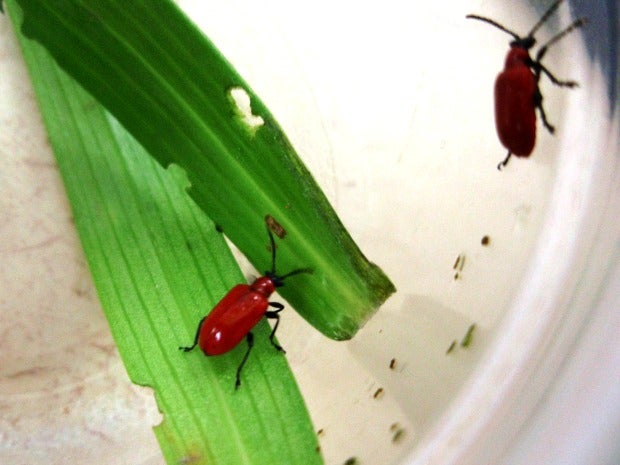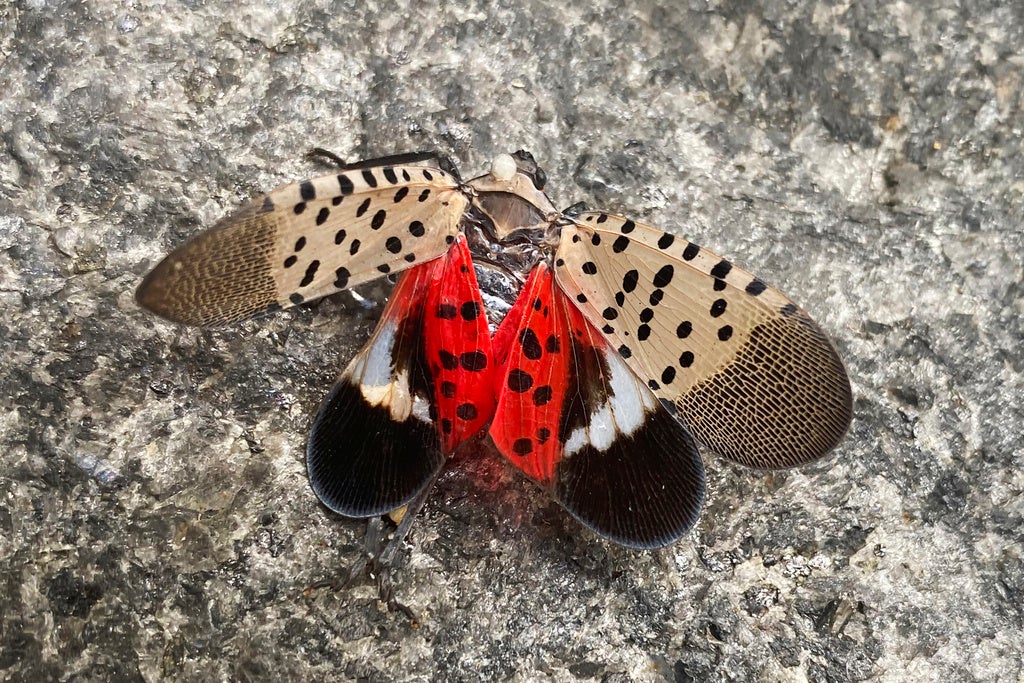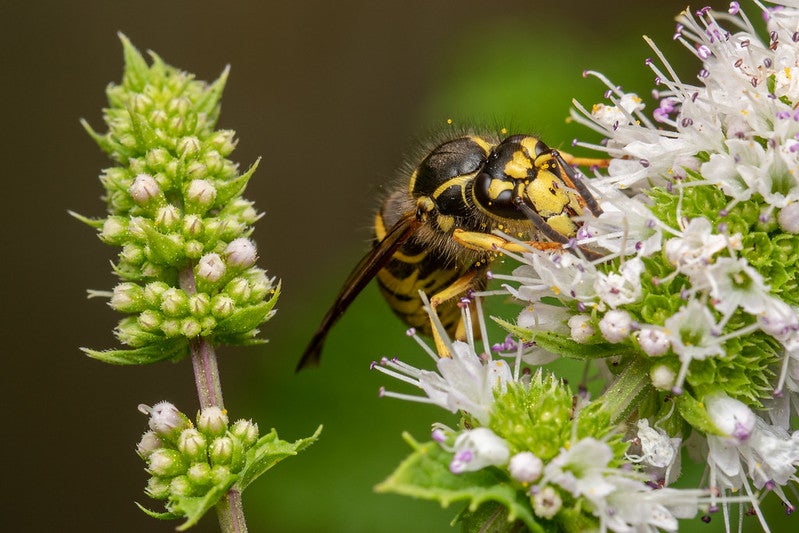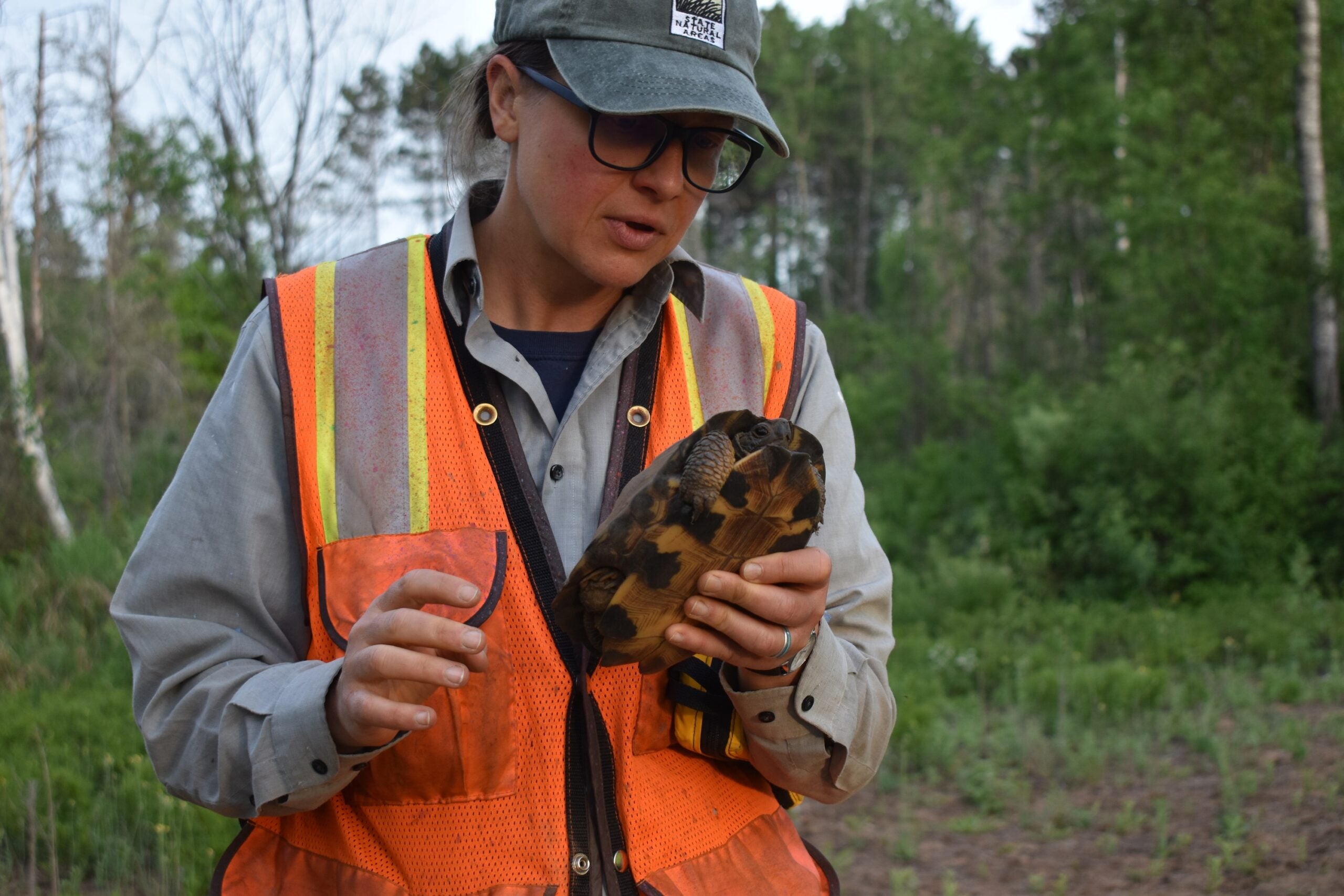Gardeners in central Wisconsin should be on the lookout for the lily leaf beetle and be ready to help prevent it from spreading around the state. Bright red in color, this invasive insect is turning up in Marathon and Portage counties.
This beetle destroys native and cultivated lilies. However, it only reproduces and develops on fritillaries and true lilies, which include Turk’s cap, tiger, Easter, Asiatic and Oriental varieties, and native lilies such as the wood lily. True lilies do not include canna, calla or daylilies.
In central Wisconsin, lilies bloom from late May into July, depending on the variety. However, the beetles are out already and are eating the vegetative parts of the plants. They have started laying eggs, and soon these will hatch.
Stay informed on the latest news
Sign up for WPR’s email newsletter.
The insect was first detected in Wisconsin in June 2014 when a homeowner brought a red beetle to the University of Wisconsin-Extension office in Marathon County for identification. The University of Wisconsin-Madison Insect Diagnostic Laboratory and the Nursery Program of the state Department of Agriculture, Trade and Consumer Protection determined that this bug was the lily leaf beetle. It overwintered and spread throughout Marathon County over the subsequent two years. In April 2016, the beetle was identified in Portage County. Currently Marathon and Portage counties are the only areas where this insect has been spotted and identified.
The adult lily leaf beetle (Lilioceris lilii) is scarlet with a black head, antennae, legs and underside, and is one-quarter to one-half inch long. Adult beetles are very active and mobile, and they make a defensive chirping or squeaking noise when provoked. Adult beetles overwinter in the soil and emerge over a period spanning very early in spring through June. Adult females lay eggs in small batches in irregular rows on the underside of host plant leaves, laying up to 450 eggs in one season, starting shortly after emerging from overwintering.
The beetles’ small orange-brown eggs hatch in one to two weeks, and the orange to light green slug-like larvae wrap themselves in their own black excrement to repel predators. The larvae cause most of the damage to plants, although adults and larvae will feed on leaves, stems, flower buds and flowers. After feeding on plants for 16-24 days, the larvae migrate to the soil and become fluorescent orange pupae that emerge after another 16-22 days as red adults. There is one generation per year.

Lily leaf beetle larvae. Tim Allen/DATCP
Asiatic lily hybrid plants appear to be the most susceptible to lily leaf beetles while some Oriental varieties are resistant. In addition to lilies (Lilium spp.) and fritillaria (Fritillaria spp.), the lily leaf beetle feeds on Solomon’s seal (Polygonatum spp.), bittersweet nightshade (Solanum dulcamara), potato plants (S. tuberosum), greenbriers (Smilax spp.) and ornamental tobacco plants (Nicatiana spp.). Damage to potatoes and other non-lilies is minimal because the beetles prefer to feed on lilies.
Since it was first detected in the United States in Massachusetts in 1992, the lily leaf beetle spread throughout the northeast, and it is found in Maine, New Hampshire, New York, Connecticut, Rhode Island and Vermont. It has also been observed in Ohio, Washington state and now Wisconsin. Part of the Chrysomelid family native to Europe and Eurasia, it has no known natural enemies in North America.
Current management practices for the lily leaf beetle include chemical and mechanical (or physical) methods of control. Gardeners should check lilies for the beetle and its damage often in the early season. Handpicking adults, eggs and larvae can greatly reduce the number and amount of damage the beetles cause. Handpicked lily leaf beetles, in any life stage, should be dropped into a bucket of soapy water. Contact insecticide gardening sprays, labeled for ornamental plants (permethrin, cyhalothrin, deltamethrin, pyrethrins, etc.), should control the lily leaf beetle. Neem oil or insecticidal soap will provide some control.
Some states have tried using parasitoid wasps as a means of biological control, and three have been approved for release to help combat lily leaf beetles. The parasitoid wasps lay their eggs in lily leaf beetle larvae, disrupting their lifecycle. So far the parasitoid wasps Tetrastichus setifer and Diaparsis jucunda have been released in Connecticut, Massachusetts, Maine, New Hampshire and Rhode Island for biological control.
Wisconsin gardeners should continue to monitor lilies and fritillaria for the red beetles, their eggs and their larvae often and throughout the growing season. Anyone suspecting a lily leaf beetle should contact a local UW-Extension office.
Editor’s Note: Heather Schlesser is UW-Extension Marathon County’s agriculture agent.
This report was produced in a partnership between Wisconsin Public Radio, PBS Wisconsin and the University of Wisconsin Cooperative Extension. @ Copyright 2024, Board of Regents of the University of Wisconsin System and Wisconsin Educational Communications Board.




